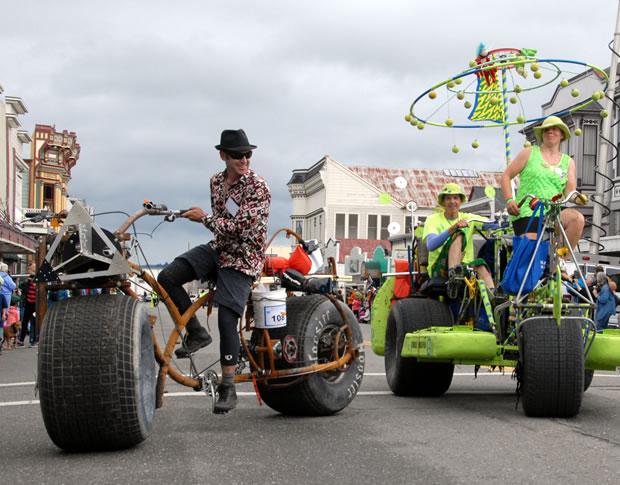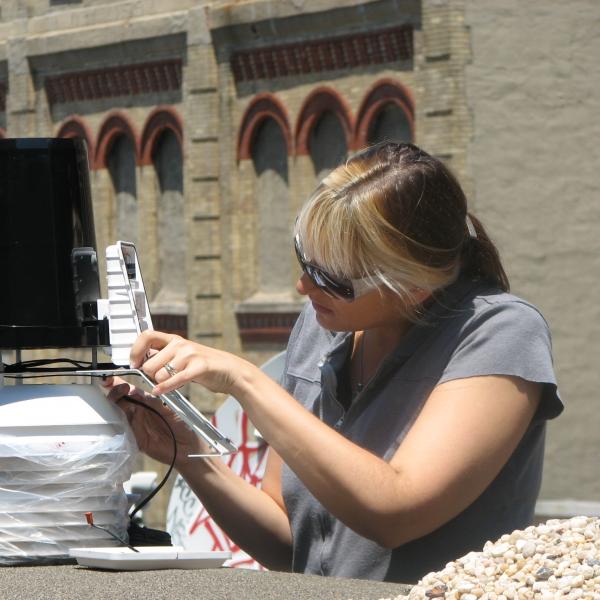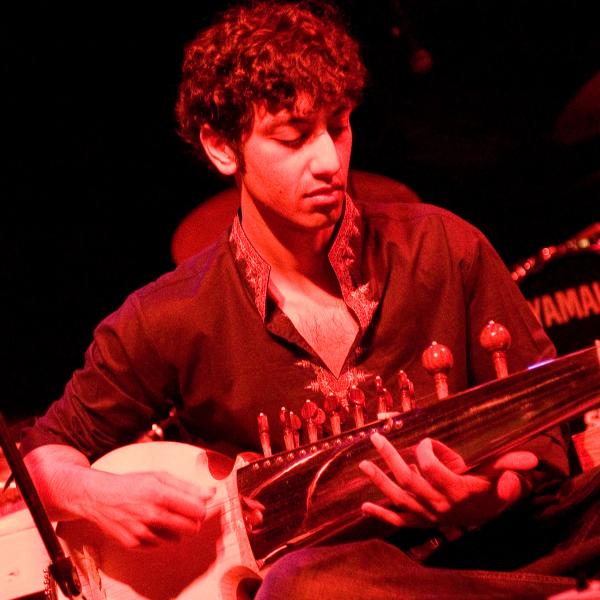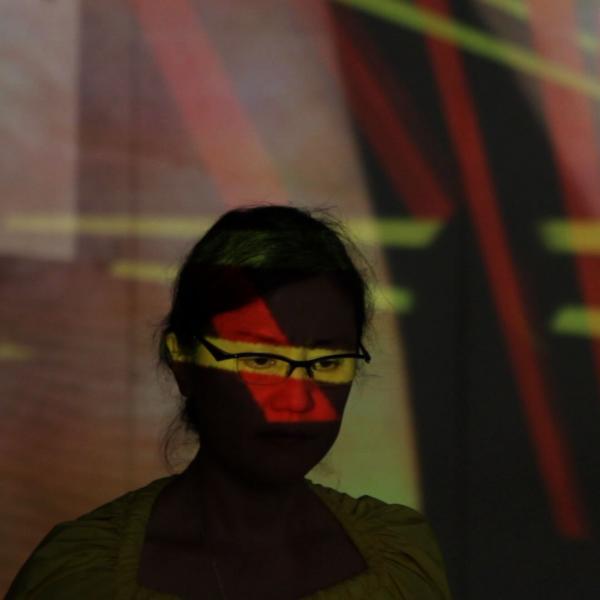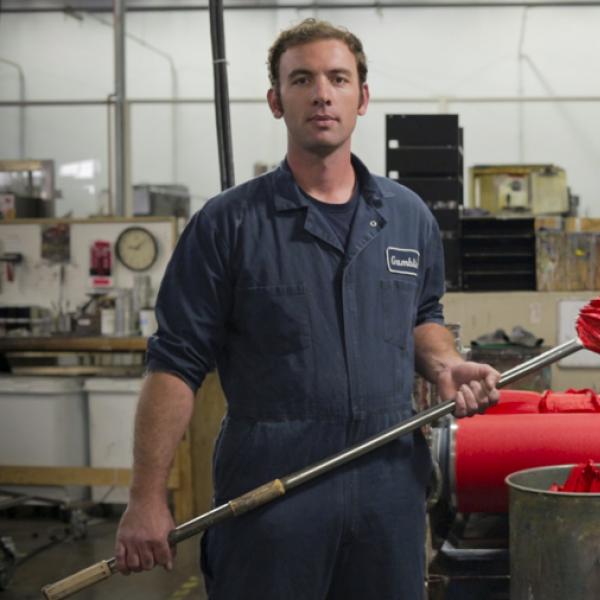Kati Texas: The Kinetic Grand Championship is called the triathlon of the art world because it incorporates major physical as well as engineering and athletic challenges.
A main part of the kinetic sculpture is that it has to be propelled. The propulsion has to be part of the sculpture itself. If you have to get off of it and push it, it might as well be a box. It’s not a kinetic sculpture. It’s not a vehicle that you can get on. So there is a rule, a feet-on-the-street rule that says you can’t put your feet on the street and push it. There are certain places on the course that are legal push zones because they have to be and that’s things that we deem unsafe or un-possible. There are certain places like the entrance to the dunes. There’s a big pipeline that comes across and it’s too slick for anybody to go over. So that’s a legal push or the downside of Dead Man’s Drop. We call it a legal push because the pit crew are allowed to attempt to slow down the vehicle on the down slope and that’s a safety thing. We want people to race in the Kinetic Grand Championship. We want them to get some glory and we want them to survive with all their body parts intact.
The grand championship has a long history. It started in 1969 when Hobart Brown welded some extra wheels onto his son’s tricycle making it a pentacycle and his friend Jack Maze who is also a sculptor looked at it and said, “Well, that’s interesting. We should make those and race them.” And then they held the first kinetic sculpture race in Ferndale, California, on Mother’s Day to coincide with an art festival that they had there and neither of the founders actually won the first race. It was won by another fellow who made a turtle that laid eggs and smoked while it rolled down Main Street. Since then the art and sport of kinetic sculpture racing has evolved. Over decades it stretched out from its first two-block course to be 42 miles of really challenging terrain. Humboldt County is beautiful and we’ve got land, sand, water, freeway, mud. We go across the bay and so over three days, about 60 teams human power their artwork from Arcata, California, to Ferndale.
We go out there and we have so much fun. We are exercising and we are doing engineering to get this stuff actually moving, plus it has to look cool and be interesting and be surrounded by people in costumes and they do dances and when kids see that, they want to do that. They can see that being a grown-up doesn’t have to be all throwing the fun out the window, which is why we say that, “Kinetics is adults having fun so that children will desire to grow older.” Actually, that is a quote from our race founder, the glorious Hobart Brown.
I moved to Humboldt in 2003 and a friend of mine was involved in the kinetic race. He invited me to come help out at the kinetic sculpture lab and I did and it was way fun. I was on a pit crew for many years and then I ran for queen and I won my crown. Then I ran my own team and won an ace and an ace is what you when you get your pilot wings, if you successfully human power your artwork across the whole course within the time limit following all the rules. It is extremely challenging and not only do you have to do all that on this human powered thing that you’ve built, but it has to have art on it and be neat and fun. So that’s how I got involved first as a peon, what we call a peon, then a pit crew, then moved my way up to royalty, then earned my ace wings, ran my own team for a few years, and I’m currently taking a break from racing while I am queen president of the Kinetic Universe.
I am a Rutabaga Queen. I earned my crown in 2008 as Queen Lotta Paintbuckets. The queen is a figurehead who reigns gloriously. One week before the grand championship, we hold the Rutabaga Ball and competitors go through a three-round pageant to determine who is going to be the best queen. There is the ball gown competition, the water crossing, which is a non-swimsuit swimsuit competition, and then the talent portion. You don’t have to be female to win by any means. We had men and women run. The queens then have the responsibility of having fun almost to the point of obnoxiousness. Now that’s the key bit. Almost to the point of obnoxiousness, but they are the ones who are out there cheerleading. They’re getting the crowds going and there are some really fun characters. The Rutabaga Queens have been running the show since 2007. I am actually the fourth queen to be president of the Kinetic Universe. It’s not a requirement that you be in charge if you’re a queen, but it’s just a coincidence that some really awesome ladies with some great nonprofit chops and some great event planning understanding took this over and we can reign with the iron fist of royalty, but also be sweet and everybody loves us because we’re queens and we have crowns on.
Lots of kinetic sculptures are made with human powered vehicles. They’ll be three-, four-, or six-wheeled. You can’t really call them bicycles because they’ve got six wheels, but human-powered crafts. Lots of gears and chains and then they will have artwork that attaches to the top of them. I’ve seen everything from 20-foot-high silver chickens to tie-dye-painted hippie-potamuses. Then there’s fire-shooting dragons and people that have a super light, very aerodynamic, very simple things like sharks and torpedoes because they’re going for the speed awards and sometimes people do absolutely insane things that just bucking for an engineering award like walking sculptures, pedaling palm trees, hamster balls, hamster wheels. People come up with some really amazing ways to try and locomote themselves across our terrain.
Rule A for amusement. The most important rule in kinetics is Rule A for amusement. Amusement is the gift that we give and get. That’s why we’re here. If you don’t got it, fake it. Being irritable or mouthing off to the race officials can earn you up to a one-hour penalty on your time and also up to and including banishment from the race or from the Kinetic Universe, although in the entire history of kinetics in Humboldt, there has only ever been one person who was banished and I think it’s because-- in fact, I saw the letter. Hobart wrote him a letter and said, “You aren’t any fun anymore. Please don’t come back.” So that was a case of extreme irritability that got somebody totally banished.
If you need it, you must carry it and that’s part of human-powering your sculpture. There’s no point in saying that this is a successful human powered vehicle if you had to stop along the way and pick up extra equipment to make it work. These are all-terrain. They have to go over sand. They have to go over water and they have to be able to do that and be self-contained. So if you need to wrap your wheels in wide foam in order to go on the sand, you’ve got to carry that with you. If you need to strap pontoons onto your vehicle in order to float on the water, you have to carry those pontoons. You have to carry the pump for the pontoons or you got your pit crew blowing them up with a straw. Some people choose not to do pontoons. They’ll do big pieces of foam and there’s a trade-off for that because the foam is fast, but it’s also heavy. Over 45 years people have really worked some serious strategies about this stuff and you’ll see what works and what doesn’t. I think one of the things that I find most interesting about kinetic sculptures is the technology and the strategies that get developed around these challenges. This is fuel-free transportation. Not only is it a way to get people and stuff through some serious challenges, it’s also a good way to keep in shape. So if we can make a vehicle that is light, fast, and easy to ride that’ll go up and down sand dunes and across the water, then making a human-powered vehicle that will get you and your kids to the grocery store and back is easy-peasy.
Day one of the Kinetic Grand Championship starts with judging on the Arcata Plaza and Arcata’s a lucky town. It has a Zocalo. It’s got a nice little town square and machines will enter. The teams will enter the square on one end and then they make a circuit. They go through engineering judging, safety. The ace judges determine whether or not you’re following all the rules. There’s art judging. There is a small hill on the plaza, so you roll down and you have to do a brake test, prove that your brakes work before we’ll let you out there on your experimental craft, and then a lot of teams choose to do some kind of pageantry that goes along with their art theme and whether that’s like a choreographed dance or a little skit or they just give gifts or bribes to the judges, whatever they want to do. Then the teams park along the plaza and the thousands of people from all over the area and all over the world really come out to get an up-close look at these teams while they’re getting ready and a few minutes before noon, everyone clears the street and then Arcata has a noon siren and as soon as the noon siren goes off, the pilots run to their craft and they do this huge Le Mans-style start where everybody races in a circle around and around and around the plaza until the ramp meister opens the ramp and that’s the start of the race.
Then they’ll go out over many, many big sand dunes, up a couple of miles of absolutely gorgeous Humboldt County beach. Then they go into June’s Dunes, named for veteran kinetic racer June Moxin because she’s so good at the sand or so bad at the sand. I can’t remember. Then they go up Dead Man’s Drop which is a 100-foot sand dune with an 11 percent grade with a serious left-hand pitch. The first time I went over Dead Man’s Drop, I was on a pit crew. I had never seen the race before. I was just going along with my friends for the fun and they’re like, “Okay, we’re getting up here. You got to grab onto the back of this thing and slow it down.” I’m like, “What do you mean, slow it down? This is a sculpture. It weighs 900 pounds. There are six people on it,” and they’re like, “Just grab on and dig in.” So we crest the sand dunes, and I look down and it’s absolutely like looking down the side of a sand skyscraper. So the first time I saw Dead Man’s Drop, I was being dragged over it by a thousand-pound lobster. If you make it through the dunes, you have achieved something really amazing. If you go into the dunes with your friends and you come out and you’re still friends, that’s pretty amazing too.
Day two starts on the Eureka waterfront. Machines will prepare to enter the water. A lot of them will have flotation that attaches and detaches, so there’ll be like arms that attach and then they’ll strap pontoons to those arms so the machines start looking like giant wombat catamarans or fire trucks on stilts and they’ll roll into the water. There is an award for biggest splash. There is an award for the team that rolls over or sinks and then you have to watch out for the man-eating clams there because they go after your pontoons. Of course if you, like me, run an all-female team, you don’t have to worry about man-eating clams. Then the machines go down a couple of miles on the water along the Eureka waterfront and people come out and on our lovely boardwalk there and watch the machines go by and cheer them on and of course in kinetic racing, we say that it is all for the glory. We’re doing it for the glory, for the glory the spectators give us and that’s what the teams really run on, so we love it when people just fill up the waterfront and the machines go by all floating and sometimes they’ll showboat. Some of these things are shooting fire into the fog. But that’s not all in day two. There is the water challenge and then they get out. They go through Eureka and then through some lovely marshes out and then up and down Loleta Hill, which is another big, crazy hill, this time on the road and this is where those brakes really come into play because once you manage to get up it-- well, first you’re going up this huge hill and then you get about-- there’s a turn and you’re like, “Oh thank God, I’m almost at the top of this enormous hill,” and then it goes on for another mile-and-a-half. Then once you get to the top, we make you do a brake check again because if your brakes don’t work on the curvy road on the way down, you’re going to fly off a cliff into Table Bluff. Down Loleta Hill, down, down, down, down, down, praying your brakes work. Then a quick turn out to Cannibal Island Road where there is a racers only beach campout and that’s the finish line for day two at Crab Park.
Day three used to be known as mud day. We would get into the river and go through up to slippery, slimy slope, which is a very riparian area, very muddy, very tidal. Nowadays we cross the mouth of the Eel River. So day three is also a water day. Once they get out of the slough then they go through the flats and the bottoms in Ferndale through the cow pastures out there, get glory from the cows. “Hi cows.” Then into Main Street Ferndale which is the location of the very first kinetic sculpture race in 1969. The finish line is in front of Hobart Brown’s house and since Hobart Brown passed away in 2008, his house is now a gallery and museum called Mind’s Eye, but we stop the fun there and then get ready for the award ceremony and racers dinner that night and then everybody goes and gets their glory and gets their aces and gets their prizes and then gets ready for next year.
Kinetic racing is glorious. It is the silliness that keeps us sane and yeah, we feed on glory, so we love it when the spectators come out. I love it when the little kids are lining the streets. “Look at this. Oh my God. Look at that thing.”
If you don’t approach this with the absolute ridiculous-- if you don’t approach kinetics as the absolutely ridiculous thing that it is, it’s just going to drive you crazy because it’s so hard, but it’s so good. It’s really, really fun. Yeah, it’s like a parade, but then you’re racing and then but don’t call it a parade because these are serious athletes. I mean when I aced, we had a sculpture that was three tricycles trained together like a train, so it was an articulated vehicle with three individuals tied together and each individual piece with the lightest possible artwork, but carrying all of our ace gears or carrying our pontoons, carrying our pontoon arms and our pumps and our tools and our water because having water for each pilot is one of the rules, my craft just on its own weighed 250 pounds and the art might weigh ten pounds of that. Just getting enough, having a machine that is sturdy enough and capable enough to achieve this accomplishment necessitates a certain amount of weight and it’s I mean just your average bike weighs less than 50 pounds. I mean definitely less than 50 pounds, so just imagine trying to do a bicycle triathlon, but your bike weighs 250 pounds and you might be wearing some kind of crazy suit of armor made out of recycled muffin tins.
It’s a really good challenge. People come out and they see you huffing and puffing and struggling and they’re so cheerful and people throw parties all along the racecourse and they give us water and smoked oysters and just lots and lots of glory along the course. It really ties the whole county together. It goes through so many different little towns and so many different little backwoods places, but everybody here knows the Kinetic Grand Championship and they’re all brought together by that on Memorial Day weekend. It’s what everybody’s doing. It’s in all the papers. It’s on the radio stations. It’s streaming live on our website.
It’s a close family and a community of artists and engineers that come out and do this crazy, silly, difficult thing every year. No one in the Kinetic Universe gets paid any amount of money and no one has to pay anything to watch it. The racers do it because they love it, because it is so much fun, and you know what? If we didn’t organize this race, they would go out and do it anyway.
I’ve traveled to lots of different races and just knowing that everybody’s out there cruising around, putting serious energy and love into this art form, it just makes my heart happy. Kinetic racing is glorious.
